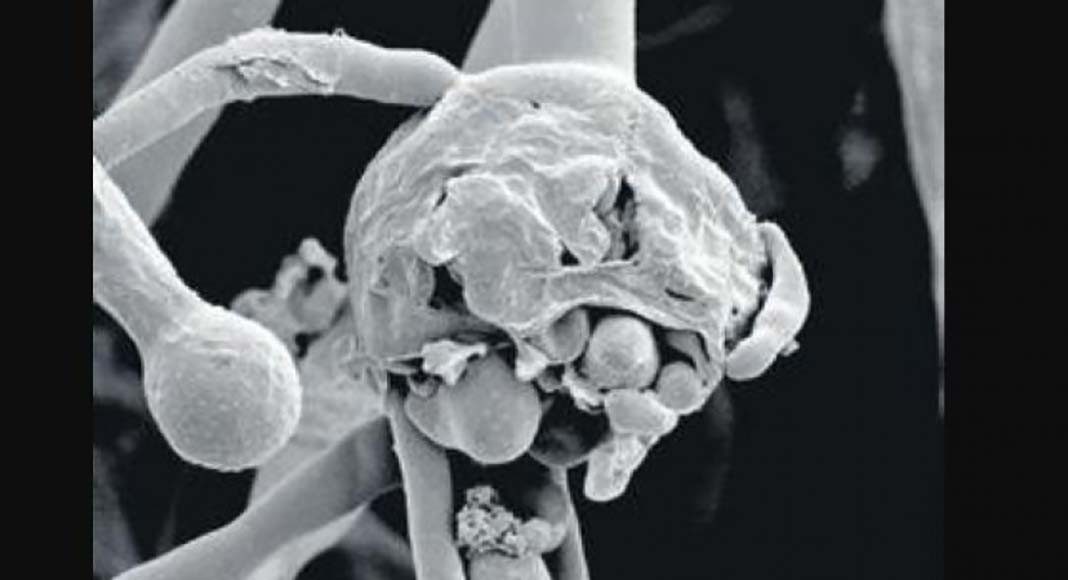Black fungus, white fungus, and yellow fungus reports of these fungal infections surface in media. White fungus is more dangerous than black fungus if the patient infected with this fungus is left untreated. Cases of mucormycosis or black fungus are booming in India. After Coronavirus disease (Covid-19), fungal infection is now the biggest public health problem in India.
Indian central government on Thursday (May 20, 2021) urged states and union territories to make black fungus a epidemic. The deadly disease requires doctors to report the disease to the government in a prescribed format within three days or within 24 hours in case of emergency.
However, a new threat is the appearance of the white fungus, which is worrying medical experts. Although there is no official confirmation of the cases, several media reports claim that about four cases of the white fungus, which health experts say is more dangerous than mucormycosis, have been reported in Patna and Bihar. Dr. Balram Bhargava, director-general of the Indian Council of Medical Research, told the media on Thursday that the color of the fungus depends on its growth. Fungal infections are common when there is moisture, said Dr. Bhargava, who did not say anything specific about the white fungus.
What is black fungus or “mucormycosis”?
Black fungus or “mucormycosis” is a potentially fatal disease that affects both COVID-19 patients and those who have recovered. The fungus is caused by Mucormycetes, a type of fungus found in the environment. The fungus surrounds blood vessels and destroys them, causing tissue necrosis (death of body tissue) and even death.
The most common symptoms are:
- Nasal congestion
- Bleeding
- Nasal discharge
- facial pain
- Tumor
- Numbness
- Blurred vision
- double vision or tearing
How to protect yourself from black fungus?
When hospitalized:
- Pay attention to the hygiene and cleanliness of your environment.
- Maintain oral hygiene with mouthwashes, povidone-iodine rinses.
- Use sterile water for humidification during oxygen administration, there should be no leakage from the humidifier.
- The use of steroids should be limited to what is necessary, with strict glycemic control.
- Avoid unnecessary use of broad-spectrum antibiotics or antifungals, as they may promote the growth of unwanted bacteria or organisms.
After the recovery of COVID-19:
- Keep the room clean and free of dust and moisture.
- Observe oral and nasal hygiene.
- Try to stay indoors and exercise or move regularly.
- Avoid construction sites, fields, and construction sites.
- Avoid gardening, as soil and plants are contaminated by the fungus. Use rubber gloves, masks, and shoes if unavoidable.
What we know about white fungus?
Health experts consider the white fungus to be more dangerous than the black fungus because it can affect not only the lungs but also other parts of the body such as the skin, stomach, kidneys, brain, genitals, and mouth.
There is little evidence that the white fungus has spread to other states, but experts believe it could be as virulent as the virus, according to reports. The mortality rate of the white fungus is currently unknown.
Patients infected with the white fungus had symptoms similar to those of Covid, but tests were negative. Medical experts believe that HRCT scans may be necessary to detect a fungal infection, according to reports. HRCT is an additional diagnostic test performed in patients with severe Covid-19.
What is white fungus or aspergillosis?
White fungus is more deadly than black fungus, experts say. It spreads to many parts of the body and severely damages the lungs. Serious effects can be seen in the kidneys, mouth, skin, and brain. According to Dr. Kaushal Verma, professor at the All India Institute of Medical Sciences (AIIMS), the white fungus starts on the tongue or intimate areas. It causes the tongue to turn white and then spreads to other parts of the body such as the lungs, brain, and food lines.
Symptoms of white fungus:
- Cough
- Fever
- Diarrhea
- Dark spots in the lungs
- Reduced oxygen levels
- White spots in the mouth
- Skin lesions
White Fungus: Who is at risk?
People with low immunity, pre-existing medical conditions, diabetics, and people taking or using steroids are at high risk of contracting the infection, according to reports.
Besides, diabetic patients, people suffering from cancer, and those on long steroid treatment are more at risk of white fungus infection.
How to protect yourself from white fungus?
- People with low immunity are more at risk of these fungal diseases. Therefore, it is important to maintain a healthy immune system.
- Keep the surrounding area clean and free of dust.
What is yellow fungus?
The first case of yellow fungus was recorded in India’s Ghaziabad in Uttar Pradesh. According to experts, yellow fungus can be scarier than black and white fungus because of the way it affects the internal organs of the body.
While cases of black fungus are increasing in the country, the first case of yellow fungus has been reported from Ghaziabad in Uttar Pradesh. Yellow fungus is considered more dangerous than white fungus and black fungus.
Symptoms of yellow fungus
Symptoms of yellow fever include lethargy, lack of appetite and weight loss.
- Lethargy
- Lack of appetite or loss of appetite
- Weight loss or poor metabolism
- Sunken eyes
In severe cases, yellow fungus can also cause pus leakage and slow healing of open wounds and slow healing of all wounds, emaciation and organ failure, and sunken eyes due to terminal necrosis.
Yellow fever is a deadly disease because it starts from the inside. Therefore, it is important to consult a doctor as soon as you notice any symptoms.
The only treatment for yellow fungus is an injection of amphotericin B, which is a broad-spectrum antifungal agent.
Causes of yellow fungus
Yellow fever is mainly caused by poor hygiene. It is very important to clean the area around your house and keep it as clean as possible. Remove old food and feces as soon as possible to avoid the proliferation of bacteria and fungi.
The humidity of the house is also important and should be measured continuously, as excess humidity can promote the growth of bacteria and fungi. The correct humidity level is between 30 and 40%. Keep in mind that low humidity is easier to manage than high humidity.
Yellow fungus: Who is at risk?
It is still not known that who are more at risk of white fungus. But some experts said those who have weak immunity are at risk of yellow fungus infection. They should remain on alert and contact a doctor if they notice any symptoms. Also, people with diabetes, cancer, and other co-morbidities should remain alert. Additionally, they should not ignore the symptoms of white fungus infection.
How to protect yourself from yellow fungus?
- Fungal infections are often spread by poor hygiene, so it is important to have good hygienic habits.
- Keep your environment clean.
- Remove expired food from your home to prevent fungal or bacterial growth.
- Humidity also plays an important role. So, moisture should be maintained between 30 and 40%.
Apart from this, you can read these health-related articles – Black fungus in Bangladesh, and Superbug can lead to the next pandemic in India from our health category.









































